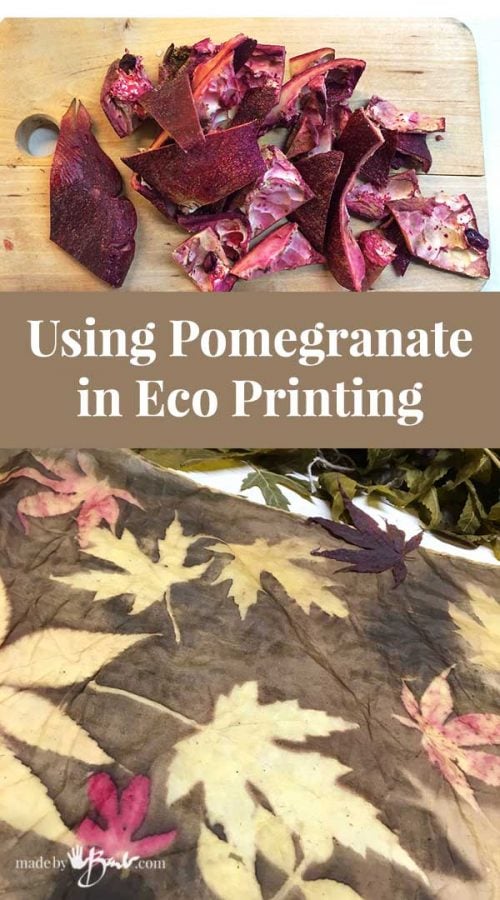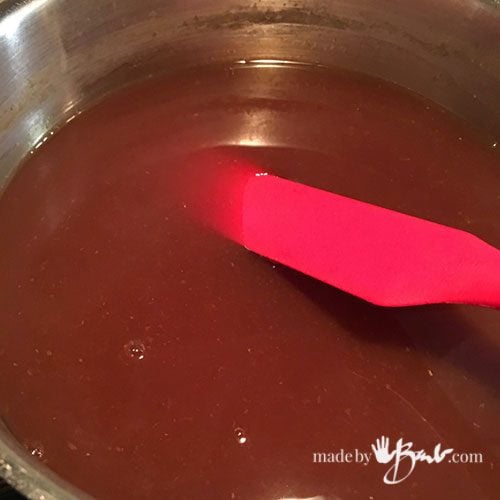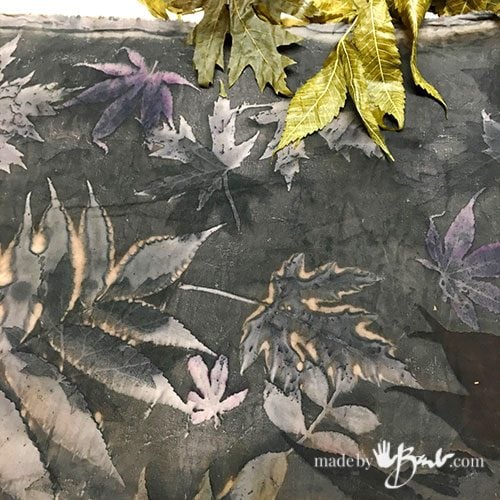Using Pomegranate in Eco Printing

Is it not wonderful when you can use cast off ‘stuffs’ to create new beautiful ‘stuffs’?! That is one of the reasons I like this earthy art form so much. Using Pomegranate in Eco Printing opens a whole unique world of possibilities.

The Pomegranate Kitchen Scraps:
Sadly, Pomegranates don’t grow where I live but there are times where they are quite affordable. The tiny morsels of flavour are such a great edible treat and I make sure to get every last one, but the skins and pulp is what we use here.

Fill a (used for dye) pot with plenty of water to accommodate the easily chopped rinds and simmer. Generally speaking I try to keep temperatures down since many natural dyestuffs will lose some of their brightness when subjected to quite high rolling boils. ‘Slow and low’ will bring out the most from the matter. After as long a cook as you can handle (an hour and allow some cooling) you will need to strain it. I use old sheer curtain mesh and squeeze every drop out that I can.

It shows a lovely warm red but that will not be the product since the major ‘gift’ from the Pomegranate is the tannins. As you may have found in this eco printing adventure the tannic acids in the leaves give us the results and Pomegranate is high in this.

The Eco Printing Process:
In my opinion here are no ‘definite’ rules to printing with botanicals. I am foremost an artist and less of a scientist so I do like to just ‘try-and-see-what-I-get’ most often. If this is all new to you you may want to check here for many of my instructions.

In this case I used an ‘iron blanket’ as a top layer over the placed leaves and an additional reused plastic barrier. The amount of iron will play a factor in how dark and dull the tones will be. Note the warm yellow that is imparted by the pomegranate.

This is the print left on the iron blanket after the alternate steaming, as it was used multiple times; eventually it will be almost solid black. As you may noticed in all my eco printing iron plays a role in making the print permanent and iron loves to combine with tannin. Tannins also act as a mordant to help bind alum to cellulose (plant based) fibres. Sound complicated? Yes, for sure. I learn most from observing results of my tests.
The Magic Revealed:

I have learnt that ‘more’ tannins + ‘more’ iron = darker prints. Note the way that the leaves created a resist since they blocked the tannin and iron from combining. The reds are actually from the natural colour of the Japanese maples leaves. Adding alum into this process (before or after the tannin) will add an extra dose of golden yellow. How much you ask? Well that is always the question; there are some complex calculations of %’s against weight of fibre (WOF). I’m a ‘dash of this and dash of that’ kind of person…

After a vigorous wash, dry and iron it looks a wonderful taupe with buttery yellow shapes. A happy ‘accident’ of red maples just rounds it all off.

Won’t you brew up some of your rinds and let nature amaze you? I’ll warn you though; it may become addictive. Alright, gotta run and roll up some more bundles… because nothing is more fun than opening up and discovering the magic! Happy printing!
Let me know what wonders you’ve created.
Hi Barb
I love the results with your scarf
Could I please just clarify…..
Did you pre mordant your target fabric? And once bundled was it placed in a pomegranate dye bath?
Thanks for your patience with this learner
Jen 🦋
This silk was dyed in the pomegranate bath and then leaves placed, iron blanket on top and then a barrier (plastic sheeting) bundled, tied and heat processed (I like to use the microwave). Silk can be pre-mordanted with alum solution.